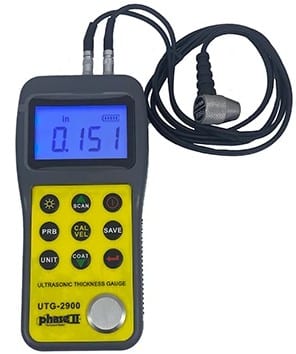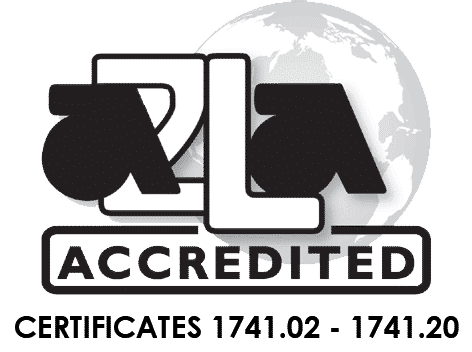Metrology Glossary: Ultrasonic Thickness Gauge
What Is An Ultrasonic Thickness Gauge?
An ultrasonic thickness gauge is an instrument designed to non-invasively measure the thickness of materials while preserving their structural integrity. This device operates by emitting high-frequency ultrasonic waves into the material being examined. It then records the time taken for the waves to reflect back from the material’s rear surface. By precisely measuring the time of this wave reflection, the gauge calculates the material’s thickness. Ultrasonic thickness gauges are highly regarded for their accuracy, versatility, and their ability to assess a wide range of materials.
What Are Ultrasonic Thickness Gauges Used For?
Monitoring material integrity and wear:
- Predictive Maintenance: Regularly assessing the thickness of critical components in machinery and infrastructure using ultrasonic thickness gauges aids in early problem identification, preventing potential failures, minimizing downtime, and enhancing safety.
- Corrosion Detection: Ultrasonic gauges play a crucial role in detecting and monitoring corrosion levels in pipes, tanks, and other structures. This ensures safe operation, extends the lifespan of assets, and helps in proactive maintenance.
- Erosion and Wear Monitoring: These gauges effectively track the erosion and wear of materials such as coatings, linings, and bearings. This monitoring facilitates optimized replacement schedules and efficient resource allocation.
Quality Control and Material Verification:
- Compliance with Thickness Specifications: In manufacturing and fabrication, ultrasonic gauges are employed to verify that materials adhere to required thickness tolerances, guaranteeing product quality and maintaining consistency.
- Defect Identification: Utilizing ultrasonic waves, these gauges reveal internal defects like cracks, voids, or delamination within materials. This capability assists in identifying and rejecting faulty components during the quality control process.
- Optimization of Material Usage: Accurate thickness measurements provided by the gauges enable manufacturers to minimize material waste and optimize production processes, contributing to more efficient resource utilization.

Related Terms
Also referred to as solar testing, sun simulation testing is a type of environmental testing which subjects products to radiation mimicking that of the sun....
Also referred to as climate testing, environmental testing subjects products to induced environmental conditions to evaluate the effects of these conditions on the product. ...





